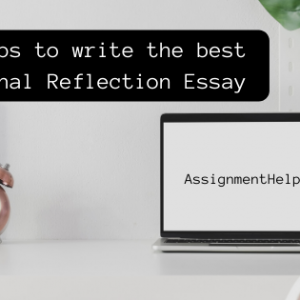A Writer’s Guide to Difference Between Editing and Proofreading
Many a times, people use the words ‘editing’ and ‘proofreading in place of each other. People tend to think that these two words have the same meaning. The people who even know the difference in the meanings of these two words also tend to mistake these two for each other. For them, this mistake is just like what we all commit sometimes by writing ‘their’ in place of ‘there’. Although the two words ‘editing’ and ‘proofreading’ are both terms that refer to checking a document for accuracy, but both of them have a substantial amount of difference between each other. This difference is something that most of us are unaware of.
In fact, many clients who hire a professional editing company or freelance editor are also unaware of this difference. The clients are not aware of which service they actually need and the company or the freelancer is unsure about what exactly he needs to do on the editing or proofreading assignment. Because of this uncertainty, many a times, the client gets something exactly different than what he had hoped for.
It is really important to know the difference between these two terms-editing and proofreading. Although people consider this difference a very slight one, but still, it is important to remember that it is important. Knowing the difference between
So what is this difference between proofreading and editing? Let’s find out:
Proofreading
Proofreading is a bit straightforward exercise than editing. Proofreading involves checking a document for flaws like grammatical inaccuracy, spelling mistakes, sentence formation and more. It also involves checking whether the syntax is in order or not. When someone proofreads, they are basically trying to find out all the punctuation, typographical, grammatical and spelling errors in the document and correct them.
This might sound like a very easy job but it is not. It appears that since it involves only correcting surface errors in a document, it is easy to do. People tend to think that since proofreading means pointing out and correcting for mistakes and inconsistencies, it is not a demanding job. You might think that anybody can do it. All that they have to do is read the document carefully and look out for syntactical, grammatical or spelling mistakes. Yet, it is not as easy as it sounds. Proofreading is a far more complex task.
Proofreading requires extensive knowledge of the language and is a very skill-intensive task. It is not everyone’s cup of tea. It requires the ability to concentrate for long periods of time. Our brain is very well adapted at self-correcting minor yet apparent mistakes in a document as we read it. In other words, because of our brain’s ability to auto correct such small mistakes, we are not able to notice them in writing as we read. On social media, you might have come across exercises that ask you to read sentences or paragraphs that contain a slightly wrong spelling of the words. We are able to read these sentences and paragraphs because of the same ability of our brain. Therefore, proofreading is a professional’s job.
A professional proofreader is trained to be methodical in catching such minor but apparent language errors that will otherwise skip human eye. He understands the conventions of the writing in a particular language and also the nuances of it. Since proofreading is his profession, he is very experienced in the job and has an eye for the errors that are usually committed. They are very used to catching these mistakes that people generally tend to overlook.
Editing
It can be said that editing is more ambitious than proofreading. Editing is a much more involved process than proofreading. It comes as a complete package. Proofreading simply means correcting the surface mistakes such as grammatical, punctuation and spelling mistakes, while editing means checking the document holistically. It involves checking that the document has been put together in the best way possible in terms of the words used, language elements, overall structure, content quality as well as the convey of ideas and information. It involves checking everything about the document, ranging from checking the facts stated in the document, making sure that the information incorporated in the document is correct, analyzing the sensibilities of the structural flow, making sure that the writing is aligned with the concerned audience as well as aligning the content with the overall thematic strategy of the publication.
While proofreading does not involve any overall addition to the writing, editors often have to themselves work on the piece of writing to enhance its overall quality. This includes replacing verbose texts with crisper, succinct words, adding or modifying paragraphs for better use of language, utilizing figure of speech such as similes, alliterations, metaphors to make the descriptions more vivid. To align the written piece with the overall theme editors have to strategically introduce keywords, catch-phases, attention grabbing elements as well as avoid an overuse of jargon based on the audience specifications.
Editing involves examining the sense of the document. It involves checking the quality of the document. Therefore, the process of editing a document, many a times, involves checking that the document makes sense as a whole, the sentences are structured in a logical and reasonable flow with inconsistencies of any sort. The editor might even delete some parts or add some more in order to improve the standard of the document. Editing process involves conducting several revisions of the written material making alterations based on removal of logical fallacies and avoiding repetitions. In terms of addressing holistically the health of writing, editors have to check for whether all the questions, hypothesis and concerns raised in introductory paragraphs have been adequately addressed by the authors, whether every character has received an appropriate closure and setting, remove inconsistencies in terms of geographical, historical or chronological setting of the writing.
Editing might also involve checking syntactically juxtaposition of words and phrases as well as errors of typos, misspellings vernacular usage as well as grammatical errors like whether you have used passive voice. It also involves checking if the tone is appropriate for the intended audience. Also, it might involve checking whether you have used the gendered language appropriately or not. The editor might check whether the writer has used the correct words to express the ideas. If not, the editor might change them. Editing might involve several revisions of the text to make sure that the quality of the document is well maintained. Sometimes editors also have to do tasks like mentioning headers, appropriate headline styles, choosing and placing correct photo captions in order as well as indexing tables and figures.
If anything, proofreading is only a tiny bit of editing. Editing involves almost everything that is done in proofreading and also a lot more that makes the article better in different ways.
In a nut shell: Editing and Proofreading
Editing and proofreading are quite different. It can be said that editing is an art that has been designed to improve the overall quality of the document. It involves the editor taking a look at the document from every angle possible, with every point of view and then making changes in these respective areas. It might include restructuring sentences, ensuring that the arguments are correct and also enhancing the language. On the other hand, proofreading can be called a science that is specifically designed for the documents and articles which are complete. Proofreading can be called as a final touch-up, which involves tasks like spell-checking, checking for grammatical, punctuation and structure errors. It improves the quality of the article but in a certain way. Editing also involves improving the quality but there are no certain steps. The editor takes measures according to the needs of the articles.
So next time you are ready with your written document, know your requirement well. Do you need someone to thin-comb out the misspelled words, grammatical mistakes, typos, punctuation and syntax errors or do you want a professional to edit your writing work to enhance the overall literary quality and sensibilities of your writing ? Former requires just a proofreader, latter is the forte of an editing professional.

